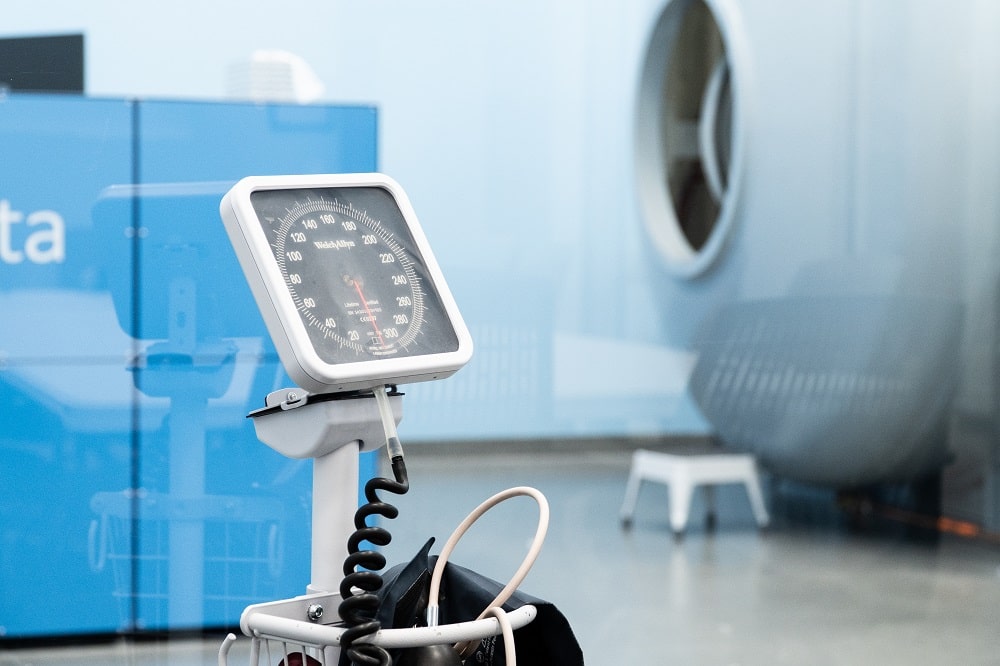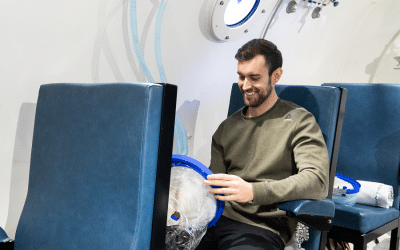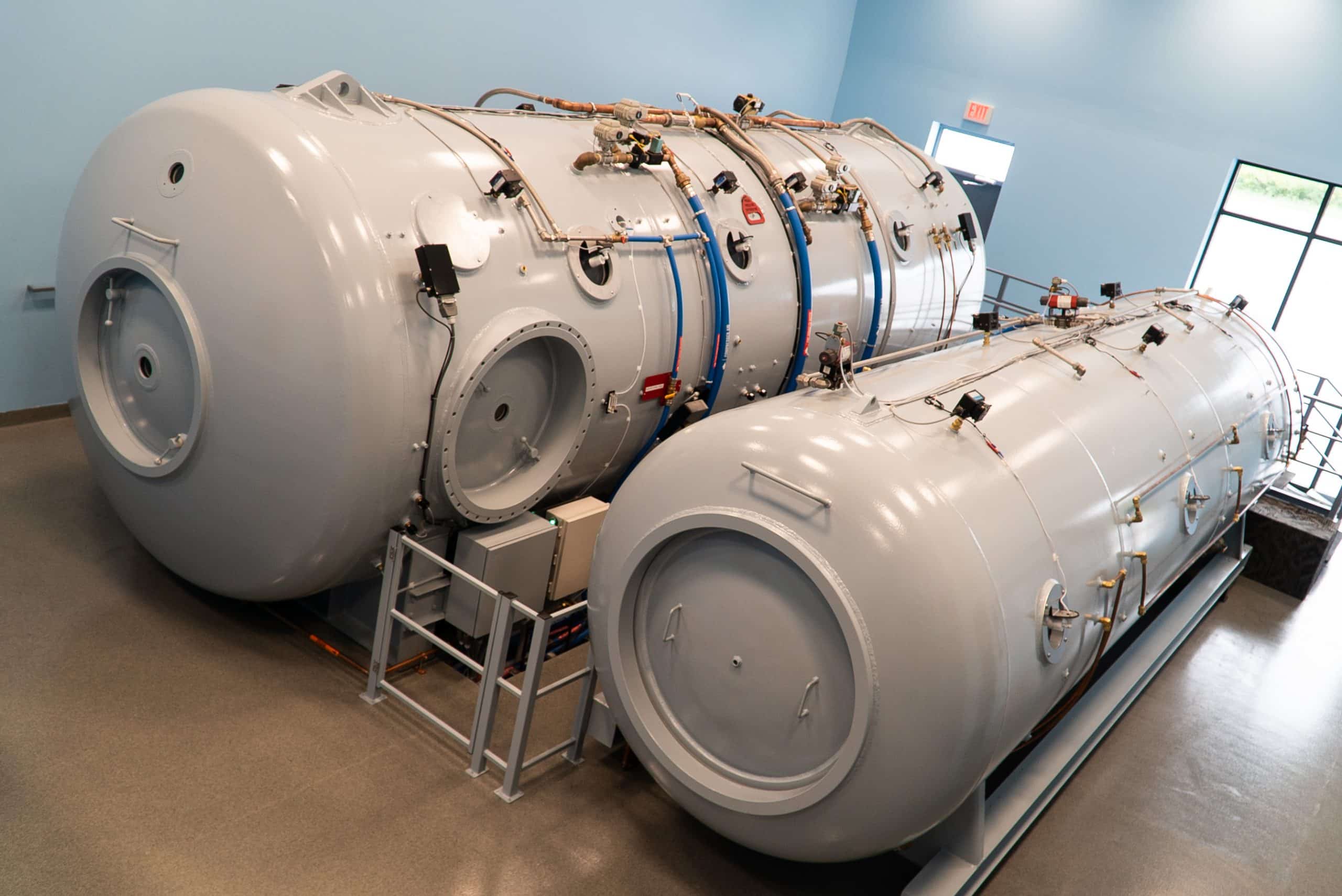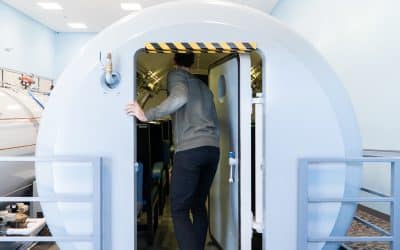Hyperbaric oxygen therapy has shown promise in treatment for patients with moderate to severe ulcerative colitis, according to a study published in Cellular Molecular Gastroenterology and Hepatology. Hyperbaric oxygen therapy involves breathing pure oxygen in a...
Ulcerative Colitis
Explore the latest research on the use of Hyperbaric Oxygen Therapy (HBOT) to treat Ulcerative Colitis. Extivita maintains an extensive publication database for Ulcerative Colitis and various other indications with therapies such as Hyperbaric Oxygen Therapy, Neurofeedback, Nutritional IV Therapy, Infrared Sauna, and Pulsed Electromagnetic Field Therapy. Explore our database on Acne and Hyperbaric Oxygen Therapy aka, HBOT, below.
For a complete list of indications treated at Extivita, explore the conditions we treat.
Ulcerative Colitis
Diagnosis Endoscopic procedures with tissue biopsy are the only way to definitively diagnose ulcerative colitis. Other types of tests can help rule out complications or other forms of inflammatory bowel disease, such as Crohn's disease. To help confirm a diagnosis of...
Hyperbaric Oxygen for Hospitalized patients with Ulcerative Colitis.
One quarter of patients with ulcerative colitis will develop a severe acute exacerbation of disease during their lifetime. Despite high dose corticosteroids, half of these patients will fail subsequent medical rescue therapy, and half will require colectomy within 5 years. Dulai and colleagues report the results of a fascinating, double blind, sham controlled, proof of concept trial which demonstrated that administration of short term hyperbaric oxygen therapy (HBOT) at the point of presentation with severe UC was able to rapidly induce short term remission and avoid the need for urgent second line medical rescue therapy. Further dose finding studies are underway.
Hyperbaric oxygen therapy is well tolerated and effective for ulcerative colitis patients hospitalized for moderate-severe flares: a phase 2A pilot multi-center, randomized, double-blind, sham-controlled trial
Abstract Background: Hyperbaric oxygen therapy (HBOT) markedly increases tissue oxygen delivery. Case series suggest it may have a potential therapeutic benefit in ulcerative colitis (UC). We investigated the therapeutic potential of HBOT as an adjunct to steroids for...
Hyperbaric Oxygen Therapy: Side Effects Defined and Quantified.
Abstract: Significance: Hyperbaric oxygen therapy (HBOT) is an important advanced therapy in the treatment of problem wounds, including diabetic foot ulcers and late effect radiation injury. HBOT remains among the safest therapies used today. Nonetheless, there are...
Multifocal osteonecrosis in a patient with anamnestic ulcerative colitis. Is there a relationship with the disease and the use of glucocorticoids twenty years before? A brief review of the literature.
In 2013 a 40 year old man came to visit in our Rheumatology Unit because of a recent bilateral shoulder and hip pain. He had been treated from 1990 to 2000 with Cyclosporin A and Sulfasalazyn because of an ulcerative colitis which was completely in remission from 2000 . Glucocorticoids at the mean daily dose of 50 mg were administered only in the first period (1990-92). X-plain rays showed a suspicious multifocal osteonecrosis of both femoral and humeral heads. Magnetic Resonance confirmed the diagnosis (stage III and IV following Ficat and Arlet’s criteria). The patient was treated with a cycle of hyperbaric oxygen therapy, with two cycles of intravenous clodronate and with a 2-month cycle of teriparatide.
Umbilical cord-derived mesenchymal stem cell transplantation combined with hyperbaric oxygen treatment for repair of traumatic brain injury.
Transplantation of umbilical cord-derived mesenchymal stem cells (UC-MSCs) for repair of traumatic brain injury has been used in the clinic. Hyperbaric oxygen (HBO) treatment has long been widely used as an adjunctive therapy for treating traumatic brain injury. UC-MSC transplantation combined with HBO treatment is expected to yield better therapeutic effects on traumatic brain injury. In this study, we established rat models of severe traumatic brain injury by pressurized fluid (2.5-3.0 atm impact force). The injured rats were then administered UC-MSC transplantation via the tail vein in combination with HBO treatment.
Hyperbaric oxygen therapy stimulates colonic stem cells and induces mucosal healing in patients with refractory ulcerative colitis: a prospective case series.
Hyperbaric oxygen (HBO) is used as part of treatment in a variety of clinical conditions. Its use in the treatment of ulcerative colitis has been reported in few clinical reports. We report the effect of HBO on refractory ulcerative colitis exploring one potential mechanism of action. A review of records of patients with refractory ulcerative colitis who received HBO was conducted. Clinical and histopathological scoring was utilised to evaluate the response to HBO therapy (HBOT). All patients manifested clinical improvement by the 40th cycle of HBOT. The median number of stool frequency dropped from seven motions/day (range=3-20) to 1/day (range=0.5-3), which was significant (z=-4.6, p<0.001).
Antioxidant therapy for treatment of inflammatory bowel disease: Does it work?
Abstract Oxidative stress (OS) is considered as one of the etiologic factors involved in several signals and symptoms of inflammatory bowel diseases (IBD) that include diarrhea, toxic megacolon and abdominal pain. This systematic review discusses approaches,...







